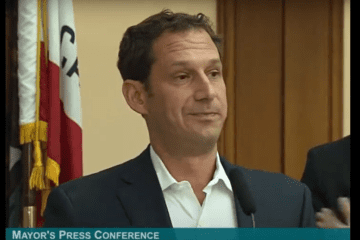Mpox Detected in SF Wastewater as Deadly Variant Emerges in Other Parts of the World
The monkeypox virus, also called mpox, has reappeared in San Francisco. Specialists detected the virus at the city’s wastewater treatment plants, signalling its presence among the population. Mpox made its ugly debut in July 2022, with monkeypox clade II bringing the disease to Europe and the Americas. The announcement ominously parallels an ongoing outbreak of mpox in central Africa, where variant clade I is claiming lives.
Don’t f*ck with mpox.
Mpox clade I has become a crisis in Africa’s DRC, and a deadly one, with at least 537 fatalities reported. The virus quickly spread to the neighboring countries of Burundi, Kenya, Rwanda and Uganda. On August 14 the World Health Organization declared a global health emergency, the second regarding mpox since 2022. The next day, Sweden recorded the first diagnosis outside Africa in a traveller who had visited the continent.
In their response to the WHO, the U.S. Department of Health states that, “the risk to the general public in the United States from clade I mpox circulating in the DRC is very low, and there are no known cases in the United States at this time. Due to efforts over the last nine months, the United States is well prepared to rapidly detect, contain, and manage clade I cases should they be identified domestically.”
Surprise, mpox isn’t pretty. It starts with flu-like symptoms, that vague array of could-be-anything aches and pains, fever and congestion. Is it a cold? The flu? COVID? In SF, you can visit the Health Department and get tested for COVID as well as mpox, and you don’t have to be a resident. They also offer vaccines! Sweet, sweet vaccines.
It gets worse. As flu-like shit keeps ravaging your body, blisters and sores erupt in all the places you don’t want them. “These spots often start as red, flat spots that then become bumps before the bumps become filled with pus and turn into scabs when they break,” as per KQED. This can be extremely painful.
The incubation period is deceptively long, too—up to seventeen days after contact. Symptoms may persist for three weeks.
Get vaccinated, dammit.
I think we’re intimately aware of how fast disease can spread. It took about a month for COVID to circulate around the world. Although mpox spreads less readily (COVID is a respiratory virus after all), that doesn’t mean you should dismiss it. If you’re at-risk (MSM, or men who have sex with men; women who have sex with those men; the immunocompromised), get vaccinated.
The threat of a more severe mpox variant feels like bad news, especially weeks before Folsom. The good news is, if you have received both rounds of the JYNNEOS vaccine, you don’t need a booster. Even if you got them back in 2022. Your immunity is still up to snuff. If you haven’t had the vaccine, you won’t reach prime immunity until two weeks after your second dose, so get on it.
The variant that specialists detected in San Francisco’s wastewater did not appear to be clade I, but clade II. While rarely deadly, this variant can still cause severe sickness in the unvaccinated. Health officials strongly recommend getting the JYNNEOS mpox vaccine, which proves highly effective at preventing serious illness. Hell, City Clinic will do it for free.
Mpox is everybody’s problem.
It’s racist too easy to wall this virus off in Africa. Mpox is everybody’s problem. The WHO knows that. It’s the same reasoning that spurred their latest global health announcement.
Remember when mpox raged out of control and infected the general population? Me neither. It’s because queer activists pushed for an aggressive vaccination response and got it. Even amid rampant homophobia from bodies that are just as vulnerable as ours. If you’re straight and thinking it couldn’t happen to you, remember: Diseases don’t recognize borders.
Like WHO director-general Tedros Adhanom Ghebreyesus told reporters at Newsweek, “This is something that should concern us all…The potential for further spread within Africa and beyond is very worrying.”










